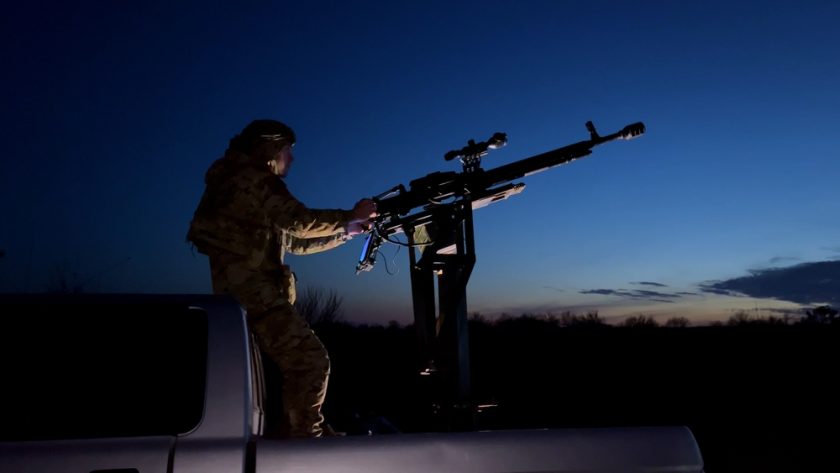The commanding general of the U.S. Army Space and Missile Defense Command, Army Lt. Gen. Stephen Gainey said Ukraine’s use of acoustic sensors as counter-drone solutions could be replicated by US forces as a “low-cost defeat system”.
“Just because it’s low cost and some of our stuff is higher cost, we should be able to find ways to work together and augment some of our capabilities with some of that lower cost capability,” Gainey said during a discussion at the Hudson Institute on July 24. He praised Ukraine’s ability to innovate low cost technologies. “Their use of acoustic sensors proliferated across their country to the point now where they’re almost positively identifying drones at distance. The way they’ve employed this acoustic sensor and as the cat and mouse game of flying drones higher, lower, or fast or slower, they’ve been able to innovate and adapt to have a pretty good capability from the detection standpoint and a low cost defeat.”
Gainey added that one of the key lessons the US could learn from Ukraine is “the ability to be able to disperse our capability and be able to respond to several different threats simultaneously”.
Gainey also spoke about the US intention to develop defence systems for drone swarms. “Again, the investment we’re putting into high-powered microwave to be able to address a large number at one time is a relatively low cost per shot capability. We already have four high-powered microwave prototypes.” In a call to industry he added “Hey, we need help in this area. Come bring your best technology, best ways you can get after it and let’s go for it.” He said that depending on demonstration results, the Department of Defense could “fund it and get it out rapidly and then start learning in the field on making it better as opposed to just waiting and taking a long time”.
Addressing platform and system modernisation within the US Army, Gainey spoke of the integrated battle command system, or IBCS, which is a fire control C-II system that “has the ability to integrate traditional Patriot components, the radar, the launchers, but also integrate the counter cruise missile capability launchers with the Sentinel radar, and eventually even the counter UAS capability where the operator has the ability from his EOC to be able to leverage the sense fire control data from that element and then assign that target to the appropriate effector, and employ that in a 360-degree manner”. Gainey said it is essential that the Department of Defense develops in that way “based on what we’re seeing”.
Prior to the Hudson discussion, Gainey discussed the command’s initiatives to lead a proof-of-concept demonstration for using C-UAS in the homeland to help U.S. Northern Command determine how to move forward with C-UAS capabilities across the continental United States.

Image: Lt. Gen. Sean A. Gainey, commanding general, U.S. Army Space and Missile Defense Command, speaks during a Coffee Series event hosted by the Association of the U.S. Army at AUSA’s headquarters, July 23, in Arlington, Virginia. (AUSA/Luc Dunn)
Speaking at a Coffee Series event hosted by the Association of the U.S. Army on July 23, Gainey said: “Warfare is changing drones and all the capabilities that they may need. We do our own internal science and technology work so we’re able to do the gap analysis across the space and missile defence portfolio through our Center of Excellence. Then our Center of Excellence is able to walk down and document to our technical centre from a science and technology perspective. They can go out and work closely with industry and see what’s out there to help get after some of the challenges that we have moving forward. We’re having to leverage more capability for a mission set with our modernization. We’re building based off knowing that there’s a 360-degree threat.”
For more information
US Army Space and Missile Defense Command
(Image: Shutterstock)




